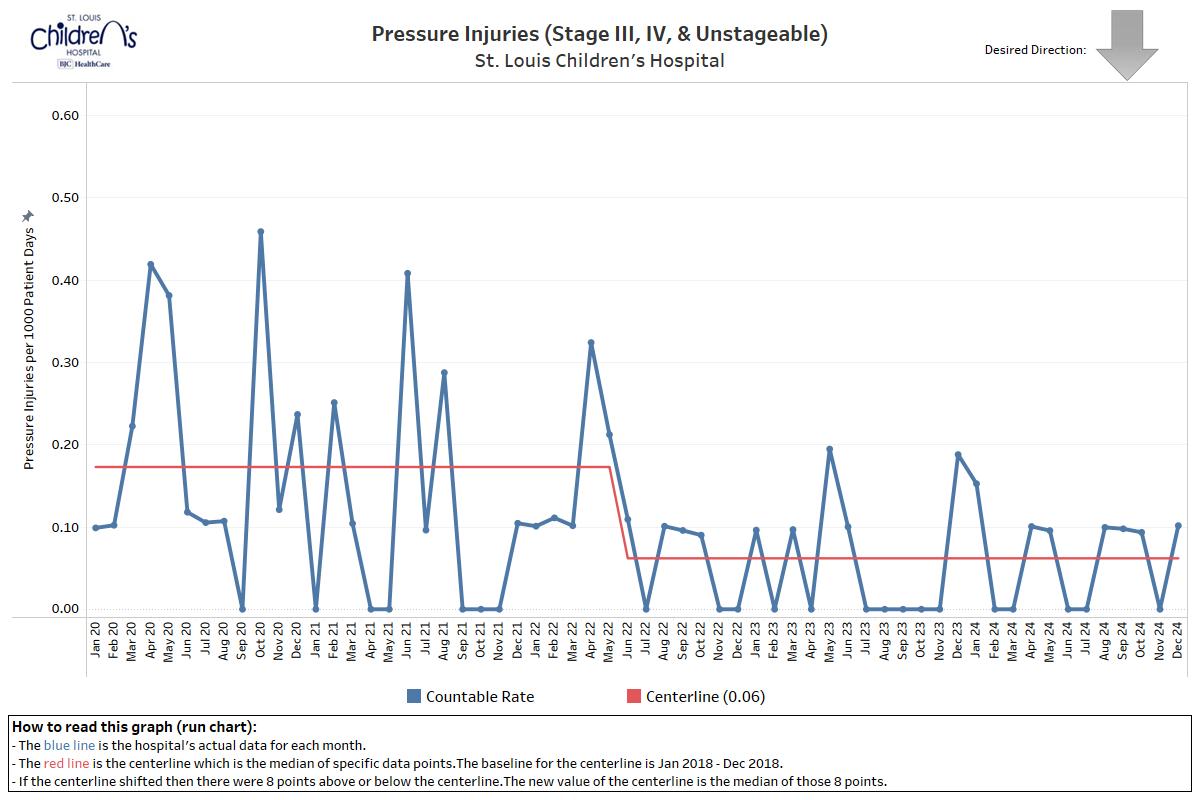What is a pressure injury?
A pressure injury is an injury to the skin and/or underlying tissue, usually in places where a bone is close to the skin. Pressure injuries can be caused by friction, or long periods of uninterrupted pressure.
Why we measure the number of pressure injuries:
Children who are not mobile, who are undergoing certain procedures, or who use certain medical equipment or devices as part of their care have a higher risk of developing a pressure injury.
How we measure:
The number of pressure injuries that are Stage III, IV, and Unstageable per 1,000 patient days. Each day that a patient is in the hospital counts as one patient day.
What we are doing to improve:
- Making sure staff follow best practices to help prevent pressure injuries
- Developing new treatments for pressure injuries related to certain devices
- Making sure staff specially trained in wound care review each possible pressure injury to ensure appropriate treatment
What can families do to help prevent pressure injuries?
- Talk to your child’s nurse about what might put your child at risk for a pressure injury. Things like moisture, pressure, friction, a medical device, or not being able to move can increase the risk of pressure injuries.
- If you are able, help us change your child’s position often.
- Let a nurse know if you see any red areas on your child’s skin, or if you see your child laying on tubes or other medical equipment.











